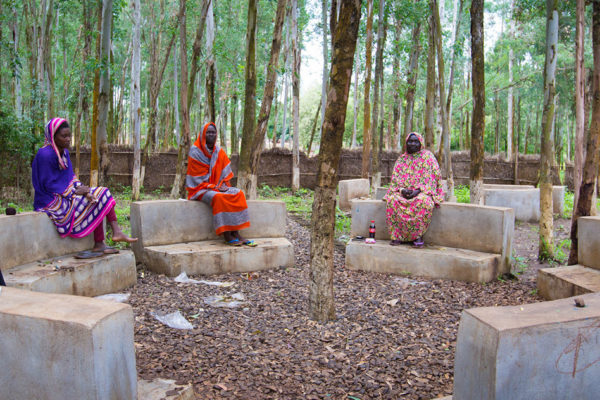A 10-year-old girl was living in a small village in southeastern Sierra Leone during the country’s decade-long civil war when the rebels arrived. “They said they were going to take the girls and boys,” she said. “I was the first person picked. They picked 20 girls and 20 boys. They took us to another town, and I was there one week. I was raped and couldn’t walk, so they left me there.”
This is just one of countless narratives of gender-based violence that adolescent girls face in humanitarian settings.
While some interventions exist, more needs to be done to ensure that global efforts to end gender-based violence include a focus on adolescent girls, finds a new study from the Brown School at Washington University in St. Louis published Nov. 20 in the journal The Lancet Child & Adolescent Health.

“Despite the fact that we know that violence against adolescent girls increases in humanitarian settings, this remains an under-researched and underfunded area of intervention,” said Lindsay Stark, associate professor and an expert on the protection and well-being of women and children in situations of extreme adversity.
“Such focused attention is essential to meeting international commitments such as the Sustainable Development Goals.”
Stark is co-author of the paper, “Gender-based violence against adolescent girls in humanitarian settings: a review of the evidence.” The study presents a novel framework for gender-based violence risks facing adolescent girls in emergencies, synthesizes the limited evidence for relevant prevention and response, and identifies barriers to effective and ethical measurement and evaluation.
“We have few evidence-based models for how to keep girls safe,” Stark said. “This reality not only has relevance for many of the global settings in which I work, but also communities closer to home who are currently being hit hard by the COVID pandemic.”
Sexual violence against girls and women is common in humanitarian settings, mainly due to their combined vulnerabilities related to age, gender and factors associated with conflict or disaster.
Among the limited studies that do exist, the majority come from sub-Saharan Africa and suggest that approximately 40% of female adolescents in emergency settings have experienced some form of intimate partner violence, Stark said.
In some humanitarian contexts, as many as 26.5% of adolescent girls have experienced nonpartner sexual violence, she said. Within the context of ongoing war, studies suggest that 29% to 44% of former female child soldiers experience rape during conflict.
“More explicit focus on adolescent girls is needed when designing and evaluating interventions to ensure global efforts to end gender-based violence are inclusive of this population.”
Lindsay Stark
Due to a lack of clear division of labor between gender-based violence and child protection sectors, adolescent girls are often neglected by both groups, and violence against this subpopulation too often goes unaddressed, the paper’s authors wrote.
The study included work in conflict-affected communities with refugees, both in camps and in urban settings; internally displaced people; and communities affected by natural disasters.
“While some early evidence highlights promising interventions for transforming girls’ attitudes around violence and gender inequity and improving mental well-being, limited evidence supports the ability of existing approaches to reduce the incidence of violence,” Stark said. “More explicit focus on adolescent girls is needed when designing and evaluating interventions to ensure global efforts to end gender-based violence are inclusive of this population.”
While many violence prevention programs focus exclusively on women or younger children, adolescent girls often fall through the cracks and lack the access and capital to advocate for their needs, she said.
“Efforts to measure experiences of gender-based violence for this often-neglected population, in particular, are critical for ensuring adolescent girls are not missed in programming,” the authors wrote in the paper. “Further, the upheaval that accompanies humanitarian crises also comes with an opening for structural and social change led by those affected; engaging and supporting adolescent girls in the process of designing, implementing and evaluating interventions and response services can help to ensure this population is not left behind in the global effort to end gender-based violence.”


